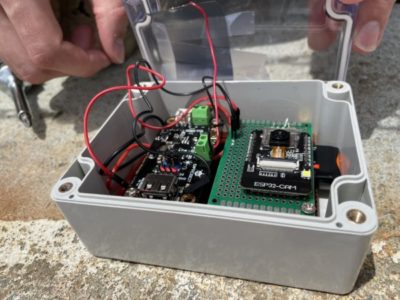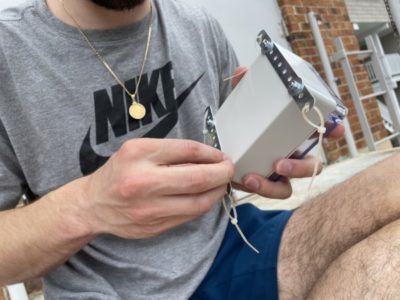The Spatial Extent Monitoring of Coastal Sunny-day Flooding project from North Carolina State University (NC State) is well underway as part of the Environmental Competition by EPICS in IEEE, in partnership with the United Engineering Foundation (UEF). Six students from the university are tackling the problem of tidal flooding, which is a steadily increasing problem that affects thousands of people in the area. Their solution focuses on providing the public with needed information, such as the spatial and potential impacts of tidal flooding, through further research and a self-powered camera.
“We finalized the system architecture and performed small lab-scale experiments to confirm it. The formal product requirements have been gathered and negotiated with the key stakeholders which have enabled the final architecture decisions,” says the project lead Jeremy Edmondson, Associate Director of ECE Senior Design at NC State.
On May 14th, the student team took a trip to Carolina Beach to deploy the first camera module prototype. On the way to the deployment site, the team had to take a detour as parts of Canal Drive were closed due to sunny day flooding. This unexpected opportunity allowed the team to see the phenomenon in person and how it impacts day-to-day life in the area.
At the deployment site, the team prepared the camera module and mounted it. The team examined the storm drains where pressure sensors were already installed. This allowed them to get valuable information for consideration when designing the total dissolved solids sensors. This valuable information included the viability of deploying a TDS sensor in a storm drain, as well as what kinds of materials will be in between a TDS sensor and the central hub.
The team faced some challenges during this initial deployment of the prototype. First, the students were unable to preview the camera’s field of view without removing the SD card, which required dismounting the entire camera module. In response to this challenge, the team began considering what changes could be made to the mounting system. Second, after initially mounting the camera, it stopped capturing after the first photo. Lastly, photos taken on the camera module were severely overexposed due to the harsh sunlight at the deployment site. This problem has since been fixed by adjusting the resolution of images and the auto-exposure parameters. The team realized that the image quality needs to be balanced with the camera module cost and energy consumption. The low-cost camera unit currently in use may need to be upgraded once field testing progresses. The team will need to consider this potential upgrade when managing their project budget.
 Thus far, the project has served as a great real-world experience for the students. Not only are they getting hands-on experience, but they are also being exposed to issues related to using new technology. For instance, LoRA (long-range radio communication) is a relatively new technology, which means that a lot of regulation surrounding its commercial/private usage is not well documented. “Many of these fears can be assuaged by looking at how other companies and groups have successfully used LoRa for similar issues in recent years. This technology has also recently seen an increase in demand so relevant parts have very long lead times,” says Sam Gaskins, member of the ECE Senior Design Team.
Thus far, the project has served as a great real-world experience for the students. Not only are they getting hands-on experience, but they are also being exposed to issues related to using new technology. For instance, LoRA (long-range radio communication) is a relatively new technology, which means that a lot of regulation surrounding its commercial/private usage is not well documented. “Many of these fears can be assuaged by looking at how other companies and groups have successfully used LoRa for similar issues in recent years. This technology has also recently seen an increase in demand so relevant parts have very long lead times,” says Sam Gaskins, member of the ECE Senior Design Team.
Although the field trip was a success, the team is not without challenges. In addition to the deployment challenges detailed above, the team also realized the need to adjust their timeline for the project. This is due to the project scope being larger than expected and the team underestimated the time required for each development loop of devices deployed in the field to gather functional input.
None of these items could have been brought to light without being on-site and testing in the actual environment. The student team is learning invaluable lessons about negotiating product requirements, as well as the value of field testing on both small and large scales.
The work continues for this project, and a new additional team will start in August 2022 to work in parallel with the existing team. With the results from this field trip, the project team will continue to refine their prototype to best meet the needs of the local community.

Recent Comments